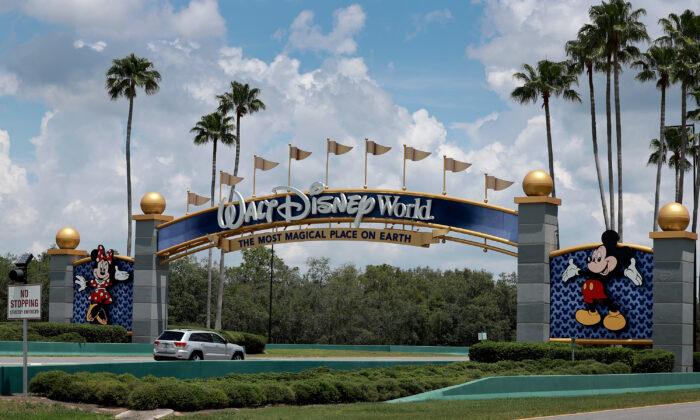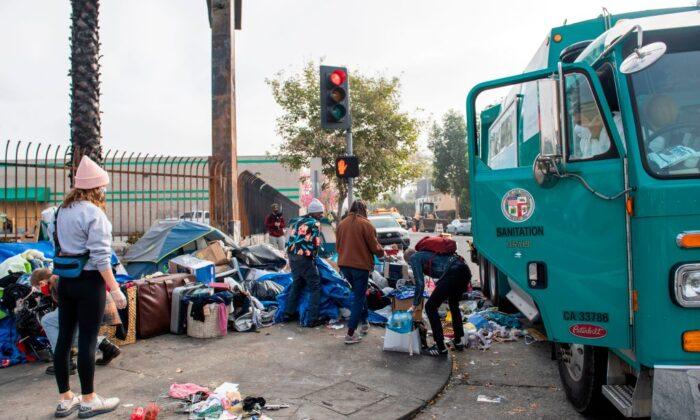Commentary
The most fascinating aspect of the Canadian truckers’ massive protest in Ottawa against vaccine mandates, now two weeks into the making, is the panic it has engendered among progressive politicians and the mainstream press.
There’s this frantic Feb. 9
headline from the BBC: “Truckers Block Vital Canada-US Border Crossing.” (That’s the Ambassador Bridge across the Detroit River linking Detroit and Windsor, Ontario, and the conduit of about 25 percent of Canadian–U.S. trade.)
There’s the
Guardian on Feb. 8, blaming the cross-country convoy of anywhere from 500 to 1,000 trucks large and small, on mystery conspirators from—hold your breath—QAnon: or “a global network of highly organized far-right groups and amplified by Facebook’s misinformation machine,” as one particularly fraught
Guardian columnist put it.
Or how about this from the
New York Times? “One day after the police chief in Canada’s capital said his city was under ‘siege’ by thousands of truckers and other protesters angry over government policies, the mayor on Sunday declared a state of emergency and called for outside help. ... ‘Someone is going to get killed or seriously injured because of the irresponsible behavior of some of these people,’ [Ottawa Mayor Jim Watson] warned.”
Oh, really? Why is it that in this day and age when, as the website Legal Insurrection has noted, every smartphone comes with a camera, we see nothing on social media but videos of exuberant Canadians hugging each other,
dancing the macarena in the snow, frying hamburgers, playing street hockey, and waving their maple-leaf flags? There’s a conspicuous lack of the trash, broken windows, and looting that characterized, say, the Antifa and Black Lives Matter riots in American cities in 2020. Where is that supposed “irresponsible behavior” supposed to be lurking that will get people killed?
The incidents that the media have reported as bolstering this prediction seem laughable. On Jan. 29 a knot of parka-clad trucker-supporters, some holding opened cans of beer, mounted the Tomb of the Unknown Soldier, an outdoor monument near the Parliament building in downtown Ottawa, and did a dance. “Drunken protesters desecrated the War Memorial,” sniffed the
Press Progress website. A lone, suspiciously brand new-looking U.S. Confederate battle flag perched on a pickup bed surfaced in multiple photos on the internet, prompting journalistic references to “symbols of slavery.” Then there was the Nazi swastika flag—again always the same lone flag displayed in conjunction with the same set of black “[expletive] Trudeau” flags behind it—that also appeared in photo after photo. Couldn’t the media at least have found two Nazi flags before sounding the alarm? Police have managed to make
25 arrests among the thousands of protesters, and issued more than 1,550 tickets for such offenses as honking horns in violation of noise ordinances.
So now, in the absence of actual violence in conjunction with the truckers, desperate progressives are reclassifying the protests as symbolic violence. Ottawa City Council member Catherine McKenney complained to The
Canadian Press about “seeing … right-wing extremist messages. I’m not sure that I would continue to call this peaceful.” The latest police effort, besides trying to cut off food and fuel for the protesters, seems to be a witch hunt for trucker child-abusers after protesters set up bouncy castles on Parliament Hill to entertain their kids this past weekend. Police have enlisted the Children’s Aid Society to investigate removing children from their parents for supposedly being at risk from fumes and lack of sanitation.
There’s no doubt that the majority of Canadians—62 percent, according to an online poll released by
Leger Opinion on Feb. 8—disapprove of the Freedom Convoy’s disruptions of traffic and the supply chain. But the poll also found that 44 percent of vaccinated Canadians express sympathy for the “concerns and frustrations” of the truckers, who were on the front line delivering needed goods to citizens during the darkest days of 2020 when the pandemic was at its most deadly. Among vaccinated Canadians ages 18 to 34, the number of sympathizers increases to 53 percent. Young Canadians obviously find the progressive politicians’ attitude sneering and condescending.
Prime Minister Justin Trudeau, who had fled Ottawa for an undisclosed location at the beginning of the protests, is a perfect example of what the young people can’t stand. Over the two weeks his favorite terms for opponents of vax mandates include “fringe minority,” “racist and misogynist,” and “extremists,” according to the
National Post—even though 85 percent of Canadian truckers are in fact vaccinated, and the protesters’ beef isn’t with vaccination itself but the Trudeau government’s two-week quarantine for unvaccinated drivers crossing the border. Trudeau returned to the capital on Feb. 9 to double down, telling Parliament that his government had no intention of removing the mandates—or indeed any nationwide vaccine mandates.
Meanwhile, provincial governments in Saskatchewan, Alberta, Quebec, and Prince Edward Island have decided to drop or ease their own vaccination and masking mandates, something of an embarrassment for Trudeau and his progressive base in Ontario. That hasn’t stopped the media hysteria, of course. “Canada’s Trumpian Trucker Protests Show the Global Radicalization of Anti-Vaxxers,” a
Washington Post headline blared on Feb. 8. “Far-Right Groups Hope Trucker Convoy Will be Canada’s Jan. 6,” a
YouTube headline posted by the Canadian site Global News declared.
Actually, the Freedom Convoy is the anti-Jan. 6, and not just in its sheer size compared to the few hundred angry people who invaded the U.S. Capitol for a few hours in 2021. Its watchwords have been good cheer, good manners, and persistence. Not to mention well-founded and widespread exasperation with federal governments’—ours and the Canadians’—two long years of COVID panic-churning with no end seemingly in sight. If a similar truckers’ protest materializes in America, we’ll have our neighbors to the north to thank for setting a worthy example.
Views expressed in this article are opinions of the author and do not necessarily reflect the views of The Epoch Times.





